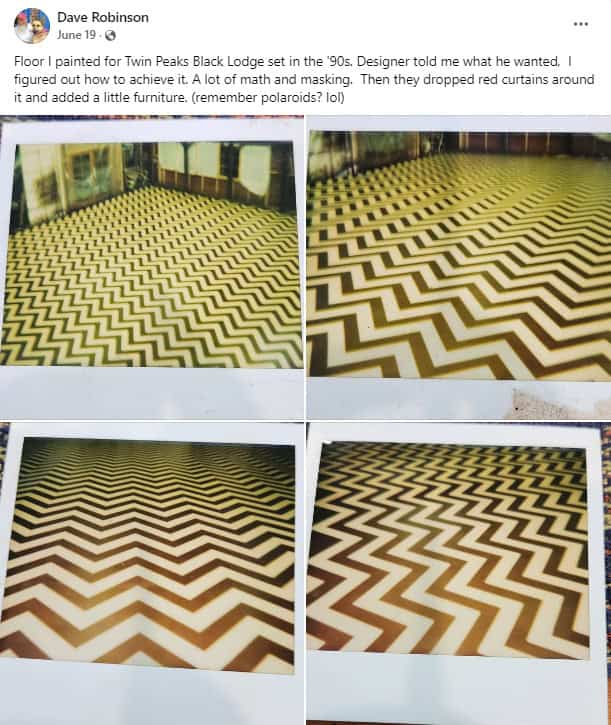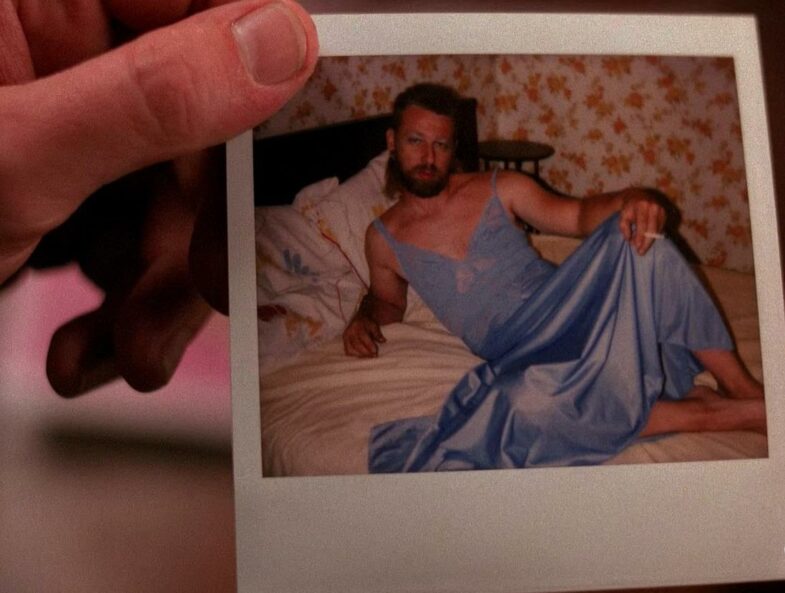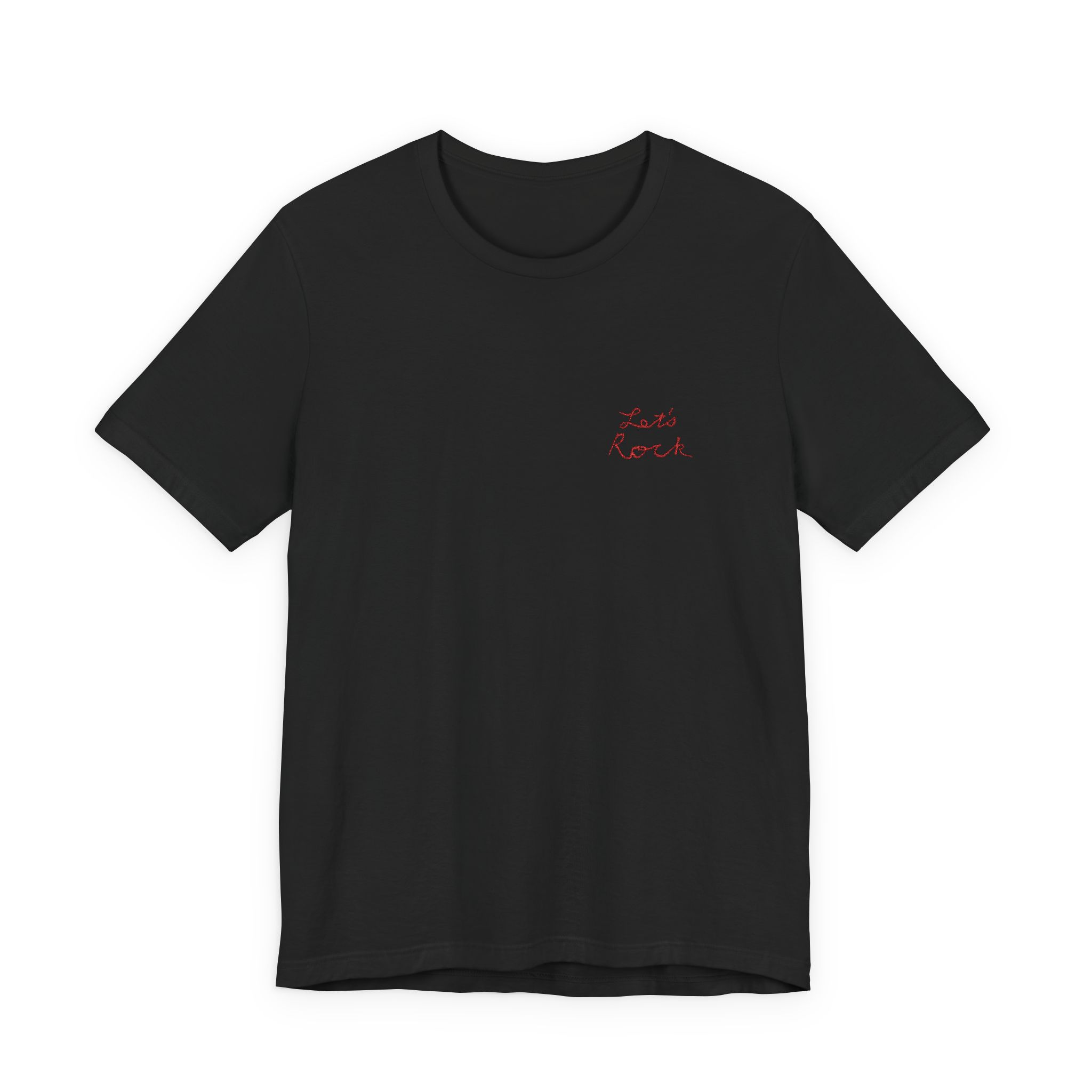No products in the cart.

Meet The Unsung Hero Who Painted The Black Lodge Floor For David Lynch (You Might Just Recognize Him)
Ever since Episode 3, the zigzagging floor of the Black Lodge has been etched into our collective memory. Both iconic and mesmerizing, the chevron floor design has become synonymous with the show, as proven by the packaging designs for physical releases, a good chunk of all the fan art out there, Showtime’s marketing for the third season, and—quite possibly—some Twin Peaks merchandise you might have lying around right now.
But have you ever wondered who was responsible for the Red Room’s floor? Dave E. Robinson is the unsung hero who brought this striking visual to life. His dedication and artistry have definitely made a lasting impression on fans worldwide. And you just wait until we put a face to the name…
Back in June 2024, Dave stepped out from behind the red curtains and casually posted a few Polaroids in the Setcrafters.com Facebook group:

Not claiming credit for the pattern itself—David Lynch’s Eraserhead features a similar floor pattern after all—Dave wrote that the designer told him what they wanted, and he figured out how to achieve it: “A lot of math and masking. Then they dropped red curtains around it and added a little furniture.” This intricate process required meticulous attention to detail and a deep understanding of spatial illusion, which Robinson executed flawlessly. The result was a floor that looked deceptively three-dimensional, drawing viewers into this surreal place called the Red Room.
Fans often wonder about the specifics behind this masterpiece and suddenly the opportunity arose to ask the source directly on Facebook.
Jake Riddle, a curious admirer who spotted the Facebook post, asked if Robinson recalled the finish he used on the floor. The painter replied, “I’m fuzzy on the brand, maybe starts with an M, but it was a durable acrylic floor paint that had its own finish. This was a stage floor with layers of paint. Prepped with bondo over seams and divots. Only spot primed the bondo.”
The complexity didn’t stop there; Robinson shared that it took a week to complete, with a team of three working tirelessly to mask the design. “Then I think I used an airless sprayer with a guy on the hose. There were exhaust fans in the roof and no other sets on that stage at the moment.”
The intricacies of the design have fascinated many. When asked if all of it was masking tape, or a corner stencil, Robinson replied, “Both.” This blend of techniques contributed to the optical illusion that makes the floor appear almost three-dimensional on screen.
Christine Neal humorously noted the toll such work must have taken on his knees, prompting Robinson to quip, “Old and retired and knees are shot. lol.” Despite the physical toll, Robinson’s sense of humor and pride in his work remain intact.
One of the most endearing aspects of Robinson’s legacy is how his creation has become a beloved symbol among fans. Alexander Ermels exclaimed that the set is his current phone background, while Brittyn Lindsey asked about the paint colors used, assuming they were off-white and brown. Robinson confirmed this and added that they were two stock colors (!) of the brand he used at the time. He felt honored by the tributes, even if some artists used black and white instead. “To each their own,” he said, showing his appreciation for the various homages. David Brown’s curiosity about Robinson’s broader involvement in Twin Peaks revealed even more of his contributions: “Yes, I worked on the original sets and during the 1st season there was a problem in the prop dept so since it was a non-union show at that time, I took over the prop master job.”
The Black Lodge floor is a piece of art that has captivated fans for decades. It all started with David Lynch’s vision and Dave Robinson’s craftsmanship. And while his name might not ring a bell among Twin Peaks fans, we have all seen Dave without realizing it. As prop master* on the first five episodes, he inserted himself in Episode 5 as the unnamed smoking man in a blue nightgown on a Polaroid (shot using the same camera he used to photograph the floor pattern) sent to Ronette Pulaski through Flesh World. Yes, Dave Robinson isn’t just the legend behind the Black Lodge floor. He’s also the bearded man described by Harry S. Truman as “no Georgia Peach.”
Ladies and gentlemen, meet Dave Robinson…

Hat tip to Vinnie Guidera for this fun fact! UPDATE: Vinnie has interviewed the man in the blue dress and has kindly let me know that he was talking about the floor in the Episode 29 finale, not the one in Episode 2. So the search is back on?
*Robinson was also lead painter on season two of Twin Peaks, On the Air, and Hotel Room, scenic artist on Twin Peaks: Fire Walk with Me, and lead scenic on Lost Highway!









He could only be talking about episode 29 as the chevron floor in episode 2 is from footage from the European version of the pilot episode. In the pilot the chevron floor is a carpet material as there are no loud footsteps heard when it is walked (or danced) upon. All other versions of the floor (fire walk with me, the return) have the hard material and the reverse clip clop footstep sound effects.
But couldn’t they have just removed footsteps from the audio? any other indicators it was originally carpet?
When you film on set, you don’t typically record footsteps sounds, almost ALL footsteps sounds you hear in movies and television are made by foley artists, added in post production.
Why would it being part of the European release preclude him from working on it? That was all filmed in WA and CA. Also, it was certainly not carpet.
tyvm ?